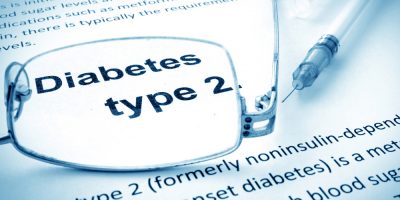- Home
- Editorial
- News
- Practice Guidelines
- Anesthesiology Guidelines
- Cancer Guidelines
- Cardiac Sciences Guidelines
- Critical Care Guidelines
- Dentistry Guidelines
- Dermatology Guidelines
- Diabetes and Endo Guidelines
- Diagnostics Guidelines
- ENT Guidelines
- Featured Practice Guidelines
- Gastroenterology Guidelines
- Geriatrics Guidelines
- Medicine Guidelines
- Nephrology Guidelines
- Neurosciences Guidelines
- Obs and Gynae Guidelines
- Ophthalmology Guidelines
- Orthopaedics Guidelines
- Paediatrics Guidelines
- Psychiatry Guidelines
- Pulmonology Guidelines
- Radiology Guidelines
- Surgery Guidelines
- Urology Guidelines
High prolactin level provides protection against diabetes in women

A normally high circulating total prolactin concentration in women is associated with a lower risk for type 2 diabetes, shows a new study published in the journal Diabetologia.
Prolactin, a multifunctional hormone, is involved in regulating insulin sensitivity and glucose homeostasis in experimental studies. Jun Li, Department of Nutrition, Harvard T.H. Chan School of Public Health, Boston, USA, and colleagues conducted the study to determine whether circulating concentrations of prolactin are associated with risk of type 2 diabetes.
The hormone helps in regulating the growth of insulin-producing cells in the pancreas and is also involved in lactation, reproduction, metabolism, immune regulation and water balance (osmoregulation). In healthy women, circulating prolactin levels change in response to pregnancy, lactation, physical activity, sleep, and stress.
In this study, the authors analyzed the prospective relationship between circulating prolactin concentrations and type 2 diabetes risk in two large studies of women: the Nurses' Health Study* (NHS) and a sister study, NHSII, with up to 22 years of follow-up. Total plasma prolactin was measured in 8615 women free of T2D and cardiovascular disease, and cancer at baseline blood collection time (NHS 1989-1990; NHSII 1996-1999) and a subset of 998 NHS women providing a second blood sample during 2000-2002.
A total of 699 cases of T2D developed across the follow-up period.
Also Read: Domperidone linked to short-term increase in breast milk volume
Key Findings:
- Total plasma prolactin levels were inversely associated with type 2 diabetes risk; the multivariable HR comparing the highest with the lowest quartile was 0.73 (95% CI 0.55, 0.95; ptrend = 0.02).
- The associations were similar by menopausal status and other risk factors (pinteraction > 0.70).
- Additional adjustment for sex and growth hormones, adiponectin, and inflammatory and insulin markers did not significantly alter the results.
- The association of plasma bioactive prolactin with type 2 diabetes risk was non-significantly stronger than that of total prolactin (HR comparing extreme quartiles, 0.53 vs 0.81 among the subset of 2478 women, pdifference = 0.11).
- The inverse association of total prolactin with type 2 diabetes was significant during the first 9 years after blood draw but waned linearly with time, whereas for bioactive prolactin, the inverse relationship persisted for a longer follow-up time after the blood draw.
The authors note that the studies involved mostly white middle-aged women, so the results are not generalizable to men or to people of other age groups or ethnicities.
They say: "In a large prospective cohort study of US women, total circulating prolactin concentrations within the physiological range were inversely associated with type 2 diabetes risk, especially during the first 9-10 years of follow-up after blood samples were taken."
They add: "Our epidemiological observations, coupled with previous population data and emerging experimental evidence, support a potential protective role of prolactin (within the biologically normal range) in the development of type 2 diabetes risk in women. Future studies are warranted to understand the biological mechanisms underlying this association, which may lead to the development of new strategies for early prevention and treatment of type 2 diabetes."
"Our findings are consistent with experimental evidence, suggesting that among healthy women, prolactin within the biologically normal range may play a protective role in the pathogenesis of type 2 diabetes," they concluded.

Disclaimer: This site is primarily intended for healthcare professionals. Any content/information on this website does not replace the advice of medical and/or health professionals and should not be construed as medical/diagnostic advice/endorsement or prescription. Use of this site is subject to our terms of use, privacy policy, advertisement policy. © 2020 Minerva Medical Treatment Pvt Ltd